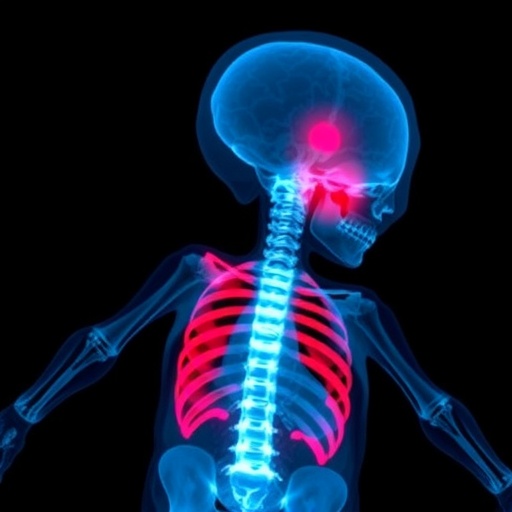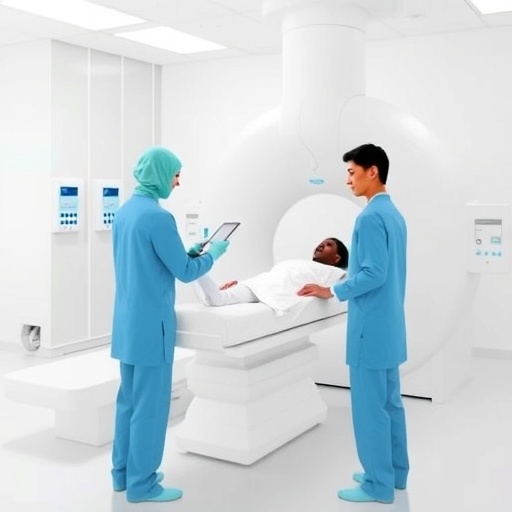
In a breakthrough collaboration encompassing nearly 100 scientists from over 70 prestigious institutions worldwide, a new set of standardized guidelines has been unveiled for the precise analysis of oxylipins through liquid chromatography coupled with mass spectrometry (LC-MS). These bioactive lipid mediators, derived from oxygenated polyunsaturated fatty acids, are increasingly recognized as pivotal regulators within a wide array of physiological and pathological contexts, including but not limited to inflammation, immune responses, oncogenesis, and degenerative diseases affecting the nervous and cardiovascular systems.
The complexity inherent to oxylipin profiles, marked by their structural diversity and dynamic biological functions, has historically presented significant challenges for analytical chemists and biochemists aiming to quantitatively characterize these molecules with accuracy and reproducibility. The recently published framework, painstakingly developed under the leadership of Valerie O’Donnell from Cardiff University and Nils Helge Schebb of the University of Wuppertal, represents the first global consensus effort to harmonize analytical strategies for oxylipin quantification. This milestone initiative integrated perspectives from academia, industry stakeholders, and clinical laboratories to forge a comprehensive and robust methodological blueprint.
Brazil’s contribution, spearheaded by Sayuri Miyamoto from the University of São Paulo’s Institute of Chemistry and the FAPESP-supported Center for Redox Processes in Biomedicine (Redoxoma), underscored the international essence of the project. The Redoxoma team was instrumental in refining the granular experimental recommendations, ensuring that the guidelines accommodate the varied biological matrices and analytical platforms prevalent in modern lipidomics laboratories. This collaboration exemplifies the power of cross-continental scientific cooperation to solve entrenched methodological bottlenecks.
.adsslot_YLVkvFNlUy{width:728px !important;height:90px !important;}
@media(max-width:1199px){ .adsslot_YLVkvFNlUy{width:468px !important;height:60px !important;}
}
@media(max-width:767px){ .adsslot_YLVkvFNlUy{width:320px !important;height:50px !important;}
}
ADVERTISEMENT
Liquid chromatography coupled with tandem mass spectrometry (LC-MS/MS) stands at the frontier of lipidomic analyses, offering unmatched sensitivity and selectivity. The technique leverages chromatographic separation of complex mixtures followed by mass-selective detection, enabling researchers to parse highly similar oxylipin isomers amid an intricate biological background. Despite its enormous potential, the absence of universally accepted protocols has contributed to significant interlaboratory variability, hampering comparative studies and slowing translational applications. The new guidelines directly address these concerns, advocating rigorous calibration strategies, sample handling procedures, and data acquisition parameters.
As Miyamoto emphasized, the standardization achieved by these guidelines is more than a technical triumph; it is a critical enabler for advancing clinical research. Robust, reproducible quantitative data on oxylipin dynamics can illuminate novel biomarkers for disease states and therapeutic responses, enhancing personalized medicine approaches. It also improves confidence in multi-center studies where uniformity in analytical procedures is paramount to drawing valid conclusions across patient cohorts.
The history of oxylipin research stretches back nearly a century, with initial identifications dating to the 1930s. Their role as biochemical mediators is exemplified by the mechanism of aspirin and other nonsteroidal anti-inflammatory drugs, which exert effects by modulating specific oxylipin synthesis pathways. However, comprehensive profiling remained elusive until technological leaps in chromatographic separation and mass spectrometry sensitivity facilitated the detection of hundreds of oxylipin species in single runs. Even so, the field was crippled by inconsistent methodologies that muddled the interpretability of results across labs.
The new technical recommendations cater to the nuanced analytical demands required to detect a broad spectrum of oxylipins, including low-abundance species critical in pathological states. By advocating standardized internal standards, optimized extraction protocols, and harmonized instrument settings, the guidelines ensure that features essential for robust data—accuracy, precision, and reproducibility—are systematically addressed. Consequently, laboratories adopting these recommendations will significantly enhance the comparability and reliability of their findings.
From a broader perspective, this consensus framework propels redox lipidomics into a new era of methodological maturity. It supplies both novice and experienced researchers a definitive roadmap that fosters methodological rigor and data integrity. Such uniformity is vital to unlocking the full biological and clinical potential of oxylipins, facilitating discoveries that may elucidate disease mechanisms or identify new therapeutic targets with unprecedented clarity.
Experts leading this initiative, including O’Donnell and Schebb, have stressed the collaborative nature of the project as central to its success. Through extensive international consultation and peer feedback, the guidelines were refined to meet real-world laboratory constraints while maintaining stringent scientific standards. This process ensured that the recommended practices are practical, adaptable, and poised to set a globally respected standard now recognized as the “gold standard” for oxylipin analyses.
The implications extend beyond academia into pharmaceutical development and clinical diagnostics, where validated assays based on these guidelines can accelerate biomarker validation and precision medicine. Standardized oxylipin measurements promise to enhance the understanding of inflammatory pathways and metabolic dysfunctions and ultimately translate into improved patient outcomes across a spectrum of diseases.
The article detailing these technical recommendations was officially published in the high-impact journal Science Signaling, cementing the relevance and anticipated influence of this work within the molecular biology and analytical chemistry communities. The availability of this resource empowers researchers worldwide to elevate the precision of their oxylipin investigations and harmonize efforts toward shared scientific goals.
This landmark publication not only fills a critical gap in methodological standardization but also galvanizes a growing community of scientists dedicated to unraveling the complex biochemistry of lipid mediators. As research on oxylipins intensifies, these unified analytical guidelines will be indispensable in driving forward the field with robustness, clarity, and collaborative spirit.
Subject of Research: Oxylipin analysis standardization using liquid chromatography–mass spectrometry
Article Title: Technical recommendations for analyzing oxylipins by liquid chromatography–mass spectrometry
News Publication Date: 20-May-2025
Web References:
Science Signaling Article
Redoxoma Center
References:
O’Donnell, V., Schebb, N. H., Miyamoto, S., et al. (2025). Technical recommendations for analyzing oxylipins by liquid chromatography–mass spectrometry. Science Signaling. DOI: 10.1126/scisignal.adw12
Image Credits: Felipe Maeda / Agência FAPESP
Keywords:
Mass spectrometry, Chromatography, Quantitative analysis, Inflammation, Cancer, Immunity, Neurodegenerative diseases, Cardiovascular disease
Tags: analytical chemistry challengesbioactive lipid mediators researchBrazil’s role in international researchcardiovascular and nervous system healthFAPESP-supported scientific initiativesglobal scientific collaboration in researchinflammation immune response regulationinterdisciplinary approach to lipid analysisliquid chromatography mass spectrometryoncogenesis and degenerative diseasesoxylipin analysis guidelinesstandardized oxylipin quantification methods





